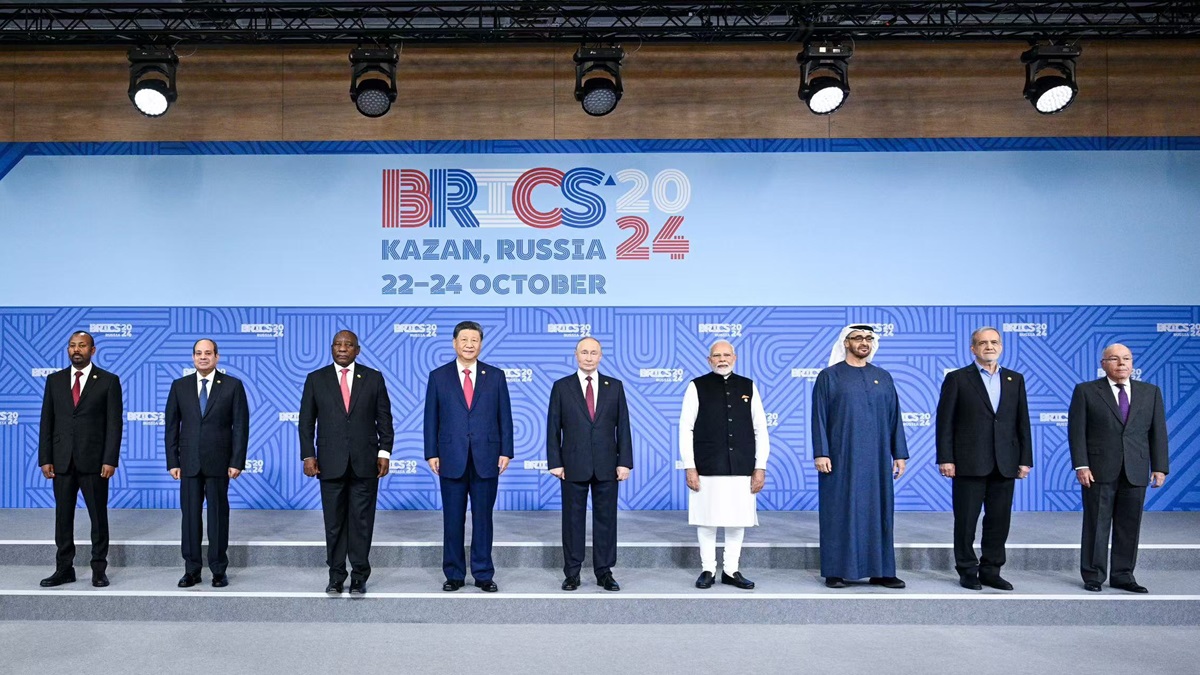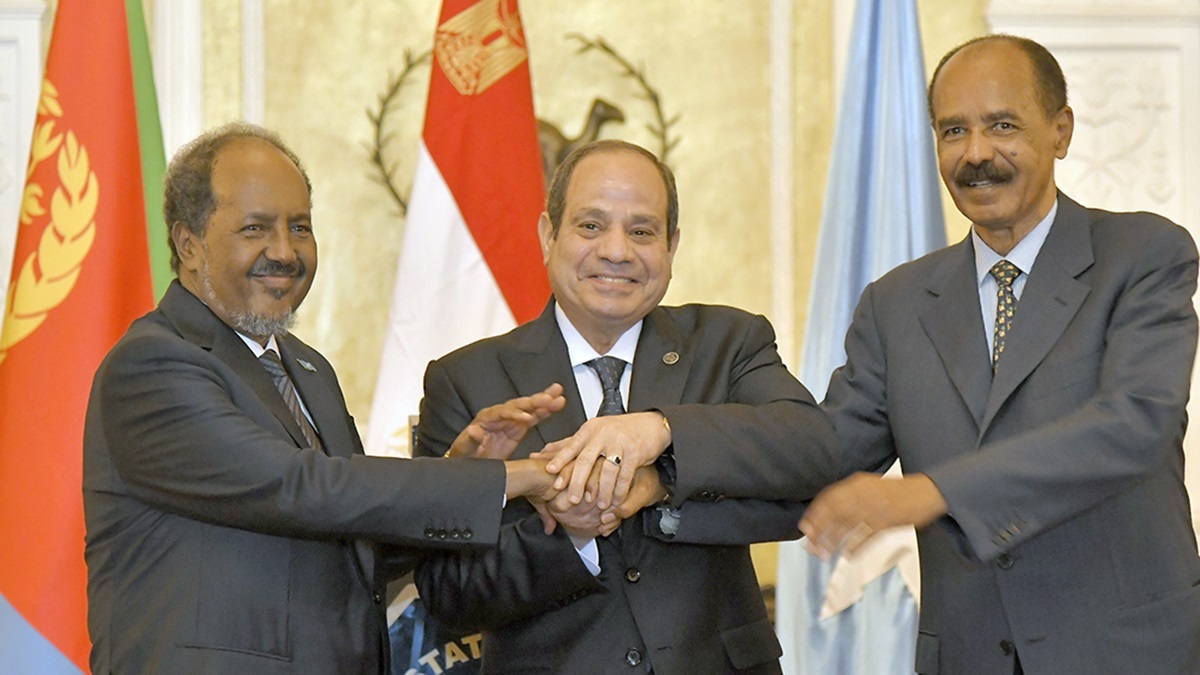Nolawi Melakedingil
News of sluggish economic performance in the euro zone and across the Atlantic in the wake of the 2007 financial crisis and its destabilizing impact for the world was steadily offset – thanks largely to manufacturing growth in China and commodity riders of the Middle East and Latin America. As the Asian powerhouses demanded more energy, food and metals and had no problem paying for it, suppliers of Brazilian ore and their counterparts in the Gulf and Africa kept investment and growth going. This much is true about the recession in the west and the emergence of growth centers elsewhere, which became a narrative that left the story of a more important growth trajectory taking shape, albeit quietly, in Africa.
Much of the aptly unreported news about the expanding and sustained economic growth is gaining ground only now. As the familiar bleak news and disappointing analysis fast expires in favor of a growing middle class (estimated at 350 million by the African Development Bank) Africans have begun coveting what a society with disposable income wants – from household machines to cars, restaurants and luxury brands. This is not a habitual statistics; it is big consumer market unanticipated just a decade ago that now opens doors to producers of jeans and cheap mobile phones in China to palm oil extractors in Malaysia and the IT developers in India, the aircraft manufacturers in North America and the car makers in Europe.
A recent report by the AfDB reveals that despite structural ills that continue to delay institutional reforms and hurt business confidence, Africa has recorded a significant decline in the number of people living under the poverty line to 39% in 2012, down from 51% only seven years back, with a GDP per capita now peaking at $953. The IMF also forecasts a Sub-Saharan African growth of 5.8% for 2015, beating previous estimates.
But make no mistake this can only be sustained if increased investment per GDP to infrastructure, which stands at a mere4% now, grows to cut production costs, improve competitiveness and facilitate regional integration.
Take for example the energy sector throughout the continent. At the backdrop of an economy on the take-off lies a merging of dismal energy interconnectedness and lack of regional consensus on financing long term energy projects. Absence of feed in tariff regulations and poor management in most parts of the continent continue threatening the positive inroads made in increasing intra African trade and attracting FDI from the sector.
The African Economic Outlook 2013, a report jointly published by the OECD, AfDB, UNDP, and ECA shows that the amount of electricity needed in 2009 to refine Africa’s four main metals – aluminum, copper, iron and nickel alone would absorb more than Africa’s total electricity generated in the same year. The staggering shortfall in supply has made the continent home to 600 million people who live without electricity.
The total electric power generation capacity of the 48 countries of Sub-Saharan Africa stands at 68,000 Megawatt, according to a World Bank study in 2008, which is equivalent to the amount generated by Spain alone. With South Africa taking the lion’s share of this installed capacity (around 40,000 Megawatt), the remaining 28,000 Megawatt installed capacity goes down to the amount generated by Argentina. Maintenance related problems of transmission lines have further shelved some 25% of this installed capacity, revealing the extent of the crippling impact caused by years of neglect.
The home frontier
A funding by the AfDB has connected Djibouti to Ethiopia’s grid that resulted in a 10% increase from the previous 50% of the number of Djiboutian households connected to electricity; reduced the cost of power by more than 60%, gave a revenue of around $1.5 million per month to the government in Ethiopia, and lighted up 8,500 households in four Ethiopian towns.
The small encouraging efforts aside, the disparity that exposes the urgent need to address power infrastructure deficits in Africa will not be narrowed before Ethiopia, whose potential for hydropower is second in the continent after the Democratic Republic of Congo, DRC, completes its series of dams under construction to increase the current 2,300 MW capacity by fivefold in 2017.
The question that would naturally follow the sale and use of electric power in east Africa that kicked off in 2012- largely as a result of the political clout carried by Ethiopia’s late prime minister Meles Zenawi and his impeccable negotiation skills, would be one that calls for a regional agreement to regulate the state and private financing and management of multi-national energy infrastructure. This is especially more pressing as political and security progresses in Sudan, Somalia and Eritrea remain elusive; and the civil war in South Sudan having the potential to erupt into full blown conflicts, pulling regional powers into the fray.
Regional ambitions
The East African Power Pool that plans to interconnect Ethiopia, Kenya, Tanzania, Sudan and Uganda with extensions to Zambia in the south and Egypt in the north is already in action with the Gadarif Galabat electric transmission line supplying 100 MW of electricity from Ethiopia since 2012; while Kenya and Djibouti are currently buying 60 MW and 35 MW respectively, according to Ethiopia’s state run power utility. Plans to export 400 MW to Kenya are awaiting the coming to grid of Gilgil Gibe III dam in the Omo valley, which was reported to have reached 87% completion by October this year. Sudan is eagerly eyeing to buy an extra 300 MW from Ethiopia, too, according to Sudan Tribune. This is expected to come online as early as 2016, pending the first twin turbines which will produce 750 MW each at Africa’s biggest 6,000 MW Grand Ethiopian Renaissance Dam (GERD) on the River Nile.
The flurry of energy diplomacy to sign deals for cheaper and abundant power from Ethiopia’s mega dams is not limited to eastern African countries. Rwanda is having formal negotiations over a planned purchase of 400 MW from Ethiopia to power its flagship Economic Development and Poverty Reduction Strategy, an ambitious second phase national economic roadmap meant to increase public access to electricity to 70% and reduce the cost of energy, which currently stands at an expensive 0.24USD /KWh.
Recent news of oil and gas finds in the Ogaden basin is also suggestive that the dams are not alone in carrying the country’s strategic prospects across borders. Poly GCL, a Chinese energy company made waves in September 2014 when it announced plans to produce around three million tons of liquefied natural gas from the fields of Hilala and Calub in the Ogaden basin of Eastern Ethiopia by 2018. Although such announcements need to be taken with a grain of salt judging from deceptive news particular to that area in the past, there is reason to believe that Ethiopia’s new found zeal to pursue energy expansion will make the company’s plans to transport gas via the 800 km long pipes to the port of Djibouti a reality in wait.
Beyond ambitions, a touch of reality
However, as much as the bustle of power trade diplomacy and agreements is anything but good for the region, there is a serious concern about the stability and predictability of long term deals signed without the existence of comprehensive regional regulatory frameworks to govern the development and management of infrastructure, conflict resolution and a host of related business and geo political challenges. There are indications that lack of political will to consolidate stability gains in South Sudan and Somalia could lead to periodic armed conflicts – or stalemates at best – that are bad for a region inking cross boundary deals and thinking of interconnectedness.
The stakes are not small by any means. The fate of the US$22 billion LAPSSET Corridor, an integrated three country infrastructure project of railways, airports, refineries, roads and ports that has pinned its major revenue source on South Sudan’s conflict-prone oil wells hinges on Ethiopia and Uganda convincing the South Sudanese to find a way to live together. A deadlock and a possible return to violence by South Sudan’s former rebels mean the Corridor will not only have to revisit its financial sources without the oil flowing through the new pipelines, but with the new country edging to war once again, the regional superpowers will be unnecessarily wasting time on a problem that they could have solved earlier.
The South Kordofan and Blue Nile intractable conflicts in Sudan, abandoned by fatigued international partners, fall once gain on the hands of Ethiopia, which needs to insist to its friendly neighbor Sudan that its best interests lie in giving concessions to the restive rebels in the two regions and Darfur. Sudan is internally weakened; left out of the oil wealth in the South, experiencing soaring cost of living, spending cuts, a skyrocketing inflation at 40%, and feeling betrayed by the west. This shows that the leadership in Sudan cannot be expected to keep its hands off the South’s problems, especially given Machar’s long standing relations with Khartoum.
As the technicians on the Sudanese and Kenyan sides of the borders toil on top of giant steel structures that carry clean and cheap energy, it is up to the politicians in Khartoum, Nairobi, Kampala, and Addis Abeba to guarantee the factories that petty misunderstandings and needless machismo between rival powers will not put them out of work. It all depends on how willing are the regional power brokers to agree on legal and political frameworks to secure and defend power installations, pay their bills, and prove that they are partners in peace before billions in investment are committed.
 Ethiopia’s role in Multilateralism: BRICS membership as a promising renaissance
Ethiopia’s role in Multilateralism: BRICS membership as a promising renaissance A New Axis Against Ethiopia: Conflicting agendas, fragile alliances, and Ethiopia’s manoeuvrable reaction
A New Axis Against Ethiopia: Conflicting agendas, fragile alliances, and Ethiopia’s manoeuvrable reaction